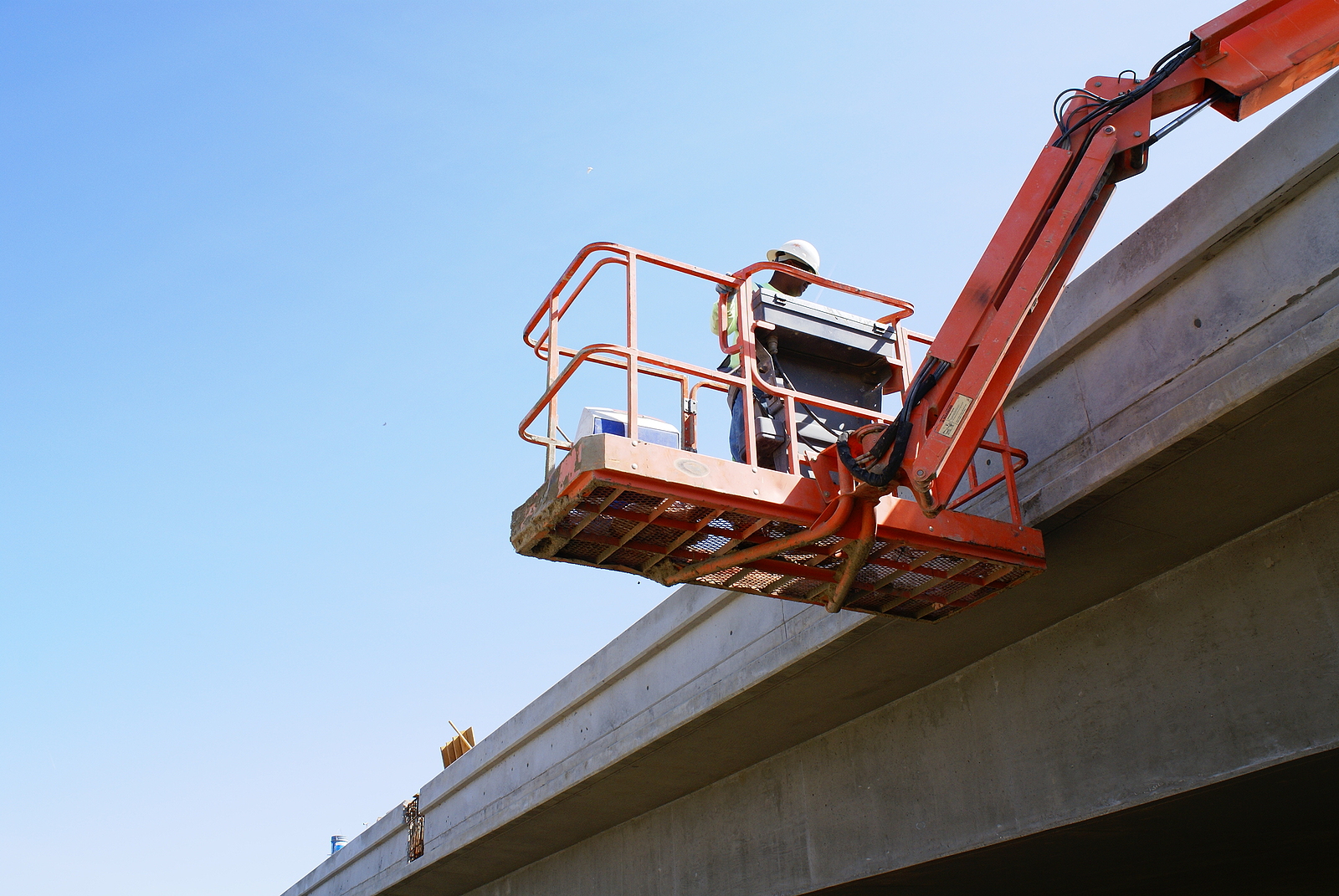Manlifts 101: Operation, Safety & More
 Manlifts are used to elevate workers in a linear vertical direction, and are popular at construction sites, maintenance facilities and more. Does your company use manlifts, even in a small capacity? Then you’re responsible for manlift certification, and ForkliftCertification.com (FLC) has everything you need to become OSHA compliant – affordably, efficiently, right away. Sign up today!
Manlifts are used to elevate workers in a linear vertical direction, and are popular at construction sites, maintenance facilities and more. Does your company use manlifts, even in a small capacity? Then you’re responsible for manlift certification, and ForkliftCertification.com (FLC) has everything you need to become OSHA compliant – affordably, efficiently, right away. Sign up today!
What is a Manlift?
Many people think a manlift is a type of forklift or pallet jack, but a manlift is different in one key aspect: a manlift has a powered belt system (usually hydraulic or electric) that propels a work platform directly vertically. While a forklift has a lifting mechanism for pallets and other cargo, a manlift’s vertical platform is for workers.
Next time you’re at a big-box retailer, you’ll probably notice manlifts everywhere. They’re used to safely elevate workers at height to retrieve products, change lightbulbs, and a thousand other tasks.
Manlifts are designed with 3 different configurations:
- Push-Around: This manlift reaches up to 50 feet and moves exactly how the name sounds – it’s “pushed around” by a worker.
- Self-Propelled: For small maintenance activities and similar work, a self-propelled manlift is ideal for any job, as its max height is usually around 20 feet.
- Atrium: Think of the atrium manlift as the workhorse option. Includes power drives to elevate workers, along with extra stability mechanisms which enable placement on uneven terrain. The atrium manlift is commonly used on construction sites.
Manlifts are classified under OSHA Standard 1910, which covers aerial work platforms (AWPs), mobile elevating work platforms (MEWPs), and similar lifts.
How to Operate a Manlift
Every manlift has its own unique design, and you should always refer to the manufacturer’s guidelines when operating this machinery – this is part of our manlift certification here at FLC.
That said, the following operational principles always apply:
Always find stable ground or terrain before elevating workers
- Lift the work platform at a safe speed.
- Take note of any overhead obstacles which could jeopardize safety.
- Utilize harness and other fall protection accessories when using a manlift.
With training & certification from FLC, we’ll get your workers trained and certified – and 100% OSHA compliant – with our self-paced courses. If you don’t have manlift certification, OSHA could fine your company with penalties in excess of $100,000 or more!
Manlift Certification Requirements for Operators and Employers
All employers need to provide manlift certification. But this is confusing, with so many safety guidelines and changes to keep track of. No worries – FLC already knows the most current guidelines, and we’ll get your team OSHA compliant in no time!
All manlifts are under OSHA standard 1910, a wide-ranging guideline with safety requirements, mandatory training rules, and much more.
Sign up for our Training Kit for complete manlift guidance, or train your own in-house training expert with our Train a Trainer course. Better yet, get both at a discount with our popular Bundle Package! Whatever your manlift certification needs, we have you covered!
Injuries, Fines, Penalties & More: Life Without Manlift Certification
OSHA requires all workers to have complete manlift certification and training, and for good reason – lack of safety knowledge eventually leads to injuries and fatalities on the job.
How serious are these safety issues? Our sister training company, CertifyMe.net, recently ran a study that showed more than 50% of companies had their safety plan audited by OSHA, and nearly 100 companies in the research were fined, with some exceeding $100,000! more than half of the companies surveyed had their safety plan inspected by OSHA. Another 85 were fined, with most fines over $100,000!
Take care of your manlift certification requirements today with FLC. We’ll show you how easy and efficient OSHA compliance is. Sign up with FLC today and don’t take chances with your employees’ safety. Thanks for visiting FLC!
